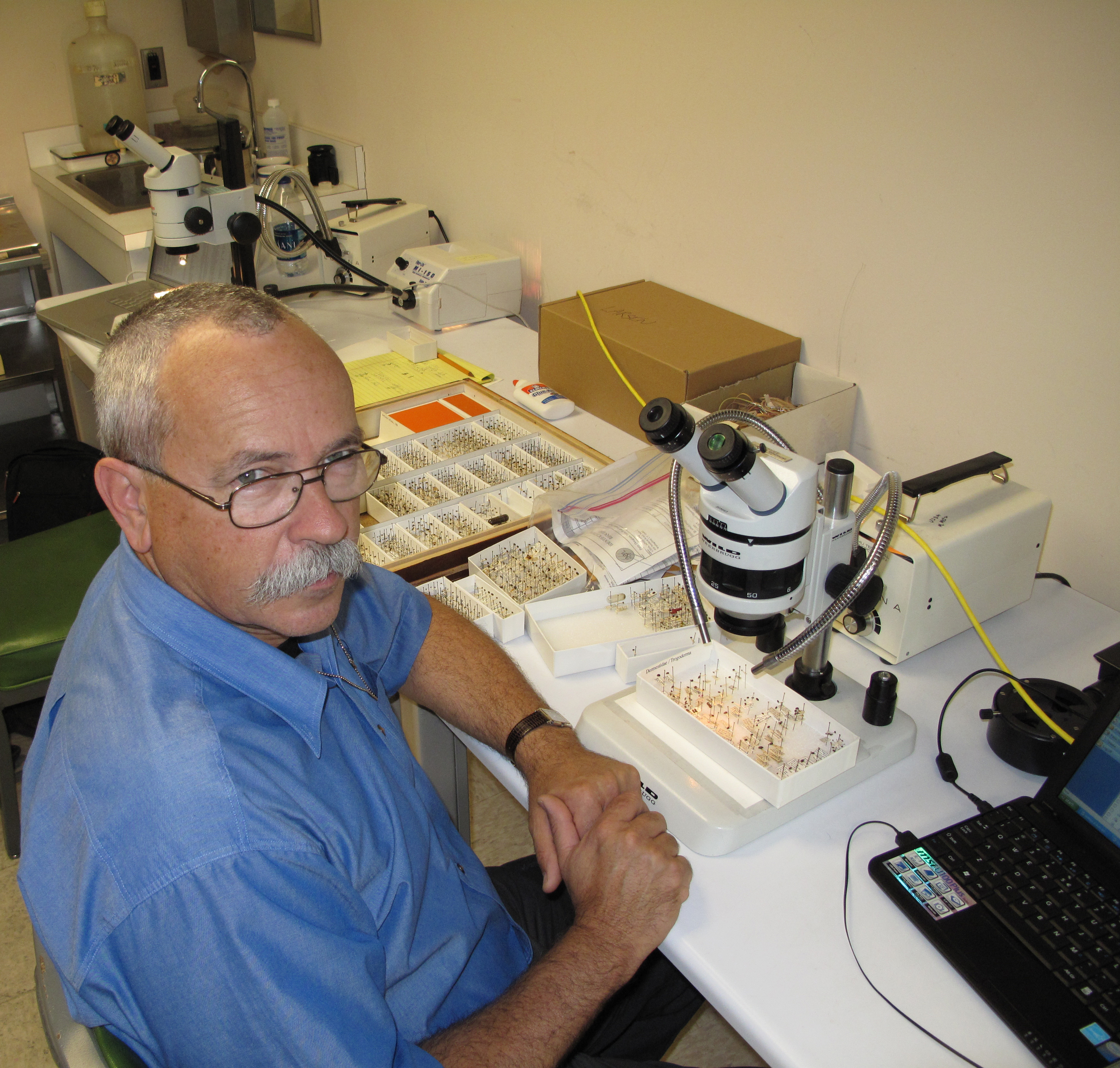Identifying Khapra beetle
 Khapra beetle, Trogoderma granarium is one of the most significant exotic pests of stored grain products and is capable of causing millions of dollars worth of damage to the Australian grain export industry. As such, there is increasing demand for accurate and expert identification of invasive pest species.
Khapra beetle, Trogoderma granarium is one of the most significant exotic pests of stored grain products and is capable of causing millions of dollars worth of damage to the Australian grain export industry. As such, there is increasing demand for accurate and expert identification of invasive pest species.
In the case of the Khapra beetle, curator and taxonomist with the Department of Agriculture and Food Western Australia, Mr Andras Szito is one of very few internationally accepted active specialists. Mr Szito provides the morphological identifications for the CRC supported National Dermestid Laboratory and supervises the morphological component for PhD candidate, Mr Mark Castalanelli’s Khapra beetle research.
In the last two centuries thousands of specimens belonging to the Trogoderma group have been collected and deposited in museums worldwide. To complement Mr Szito’s work with the CRC, he recently visited numerous leading natural history collections in the United States and Europe to take an inventory of the curated Trogoderma specimens.
Over the past decade greater emphasis has been placed on molecular methods to identify various pest species. Confidence in molecular methods requires diagnostic tests to be developed using specimens which have been verified using the best expert methods. Unfortunately as years go by, fewer and fewer taxonomists remain with the knowledge and skills to perform reliable morphological identifications at an internationally accepted level. Taxonomically trained diagnosticians are aging, jobs disappearing and entomological trainings at universities are shutting down. At the same time, as the pool of specialists with the required training and knowledge decreases the need for taxonomists is increasing because there are no internationally agreed standards for defining new species on molecular methods alone. Considering the economic implications of the presence or absence of Khapra beetle it is no surprise that the United States Department of Agriculture is very keen to collaborate with our Trogoderma projects.
There are over a hundred described species belonging to the Trogoderma group, making assessing the scientific literature and physically reviewing the specimens on which they are based very important. Over fifty of the described Trogoderma species are native to Australia and an estimated further fifty species are not yet described. Clearly the diagnostic molecular tests must reliably determine the pest species without false negatives or false positive results from other species. An additional major difficulty arises with identifying immature stages, for which there are much poorer morphological keys. A competent specialist can reliably separate the adults of the known pest species from the undescribed species. However identifying immature stages in the majority of cases is very difficult. Therefore, the ability to sequence the genome of the identified adult specimens and establish the association with immature specimens becomes increasingly important. Having a sequence of identified Trogoderma species identified by using the best available morphological means, will enable the researchers to identify the Khapra beetle and related pest species.
Few people appreciate the difficulties of identifying Khapra beetle using morphological methods. The descriptions of closely related species are scattered in time, geography and languages; the first being described in the early 19th century, the last in the late 20th century. There are descriptions in English, German, French, Latin, and Spanish with many of them appearing in obscure journals nearly impossible to access.
During his overseas visit, Mr Szito was able to photograph numerous references not held by Australian libraries or institutions. Due to their rarity, many institutions don’t lend these references at all, so accessing them is only possible by visiting. Purchasing them is also not possible due to their rarity - some of them have less than a dozen copies in existence, and if they are for sale, the purchase price is also prohibitive, with some of them exceeding €10,000.
Mr Szito’s visit to the US and Europe allowed him to establish collaborative working relationships with the curators of natural history collections and arrange the loan of specimens. The outcome of the project is not a complete revision of the Trogoderma species but it certainly aims to lay solid foundations for future work by establishing the identity of the common pest Trogoderma species.
Photo caption: Mr Andras Szito studying the Trogoderma collection in the Smithsonian Museum

